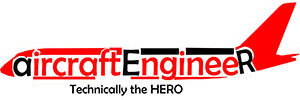Aircraft maintenance checks are periodic inspections that have to be done on all commercial/civil aircraft after a certain amount of time or usage. (military aircraft normally follow specific maintenance programmes which may or may not be similar to those of commercial/civil operators). Airlines and other commercial operators of large or turbine-powered aircraft follow a continuous inspection program approved by the Federal Aviation Administration (FAA) in the United States,or by other airworthiness authorities such as Transport Canada or the European Aviation Safety Agency (EASA). Under FAA oversight, each operator prepares a Continuous Airworthiness Maintenance Program (CAMP) under its Operations Specifications or “OpSpecs”.The CAMP includes both routine and detailed inspections. Airlines and airworthiness authorities casually refer to the detailed inspections as “checks”, commonly one of the following: A check, B check, C check, or D check. A and B checks are lighter checks, while C and D are considered heavier checks.

A CHECK
This is performed approximately every 400-600 flight hours or 200–300 cycles. (takeoff and landing is considered an aircraft “cycle”), depending on aircraft type. It needs about 20–60 man-hours and is usually performed overnight at an airport gate. The actual occurrence of this check varies by aircraft type, the cycle count, or the number of hours flown since the last check. The occurrence can be delayed by the airline if certain predetermined conditions are met.
B CHECK
This is performed approximately every 6-8 months. It needs about 120-150 man-hours, depending on the aircraft, and is usually completed within 1–3 days at an airport hangar. A similar occurrence schedule applies to the B check as to the A check. However, B checks may also be incorporated into successive A checks, i.e.: Checks A-1 through A-10 complete all the B check items.
C CHECK
This is performed approximately every 20–24 months or a specific amount of actual flight hours (FH) or as defined by the manufacturer. This maintenance check is much more extensive than a B check, requiring a large majority of the aircraft’s components to be inspected. This check puts the aircraft out of service and until it is completed, the aircraft must not leave the maintenance site. It also requires more space than A and B checks. It is, therefore, usually carried out in a hangar at a maintenance base. The time needed to complete such a check is generally 1–2 weeks and the effort involved can require up to 6,000 man-hours. The schedule of occurrence has many factors and components as has been described, and thus varies by aircraft category and type.

D CHECK
This is by far the most comprehensive and demanding check for an airplane. It is also known as an IL or “heavy maintenance visit” (HMV). This check occurs approximately every 6 years. It is a check that more or less takes the entire airplane apart for inspection and overhaul. Even the paint may need to be completely removed for further inspection on the fuselage metal skin. Such a check can generally take up to 50,000 man-hours and 2 months to complete, depending on the aircraft and the number of technicians involved. It also requires the most space of all maintenance checks, and as such must be performed at a suitable maintenance base. The requirements and the tremendous effort involved in this maintenance check make it by far the most expensive, with total costs for a single visit ending up well within the million-dollar range.
Because of the nature and the cost of such a check, most airlines — especially those with a large fleet — have to plan D checks for their aircraft years in advance. Often, older aircraft being phased out of a particular airline’s fleet are either stored or scrapped upon reaching their next D check, due to the high costs involved in comparison to the aircraft’s value. On average, a commercial aircraft undergoes three D checks before being retired. Many maintenance, repair and overhaul (MRO) shops claim that it is virtually impossible to perform a D check profitably at a shop located within the United States. As such, only a few of these shops offer D checks.
Given the time requirements of this check, many airlines use the opportunity in order to also make major cabin modifications on the aircraft, which would otherwise require an amount of time that would have to put the aircraft out of service without the need for an inspection. This may include new seats, entertainment systems, carpeting, etc.
In the United States, initial aircraft maintenance requirements are proposed in a Maintenance Review Board (MRB) report[5] report based on Air Transport Association (ATA) publication MSG-3 (Maintenance Steering Group – 3rd Task Force).
Maintenance Review Board (US)
Modern transport category airplanes with MSG-3-derived maintenance programs employ usage parameters for each maintenance requirement such as flight hours, calendar time, or flight cycles. Maintenance intervals based on usage parameters allow more flexibility in scheduling the maintenance program to optimize aircraft utilization and minimize aircraft downtime.
